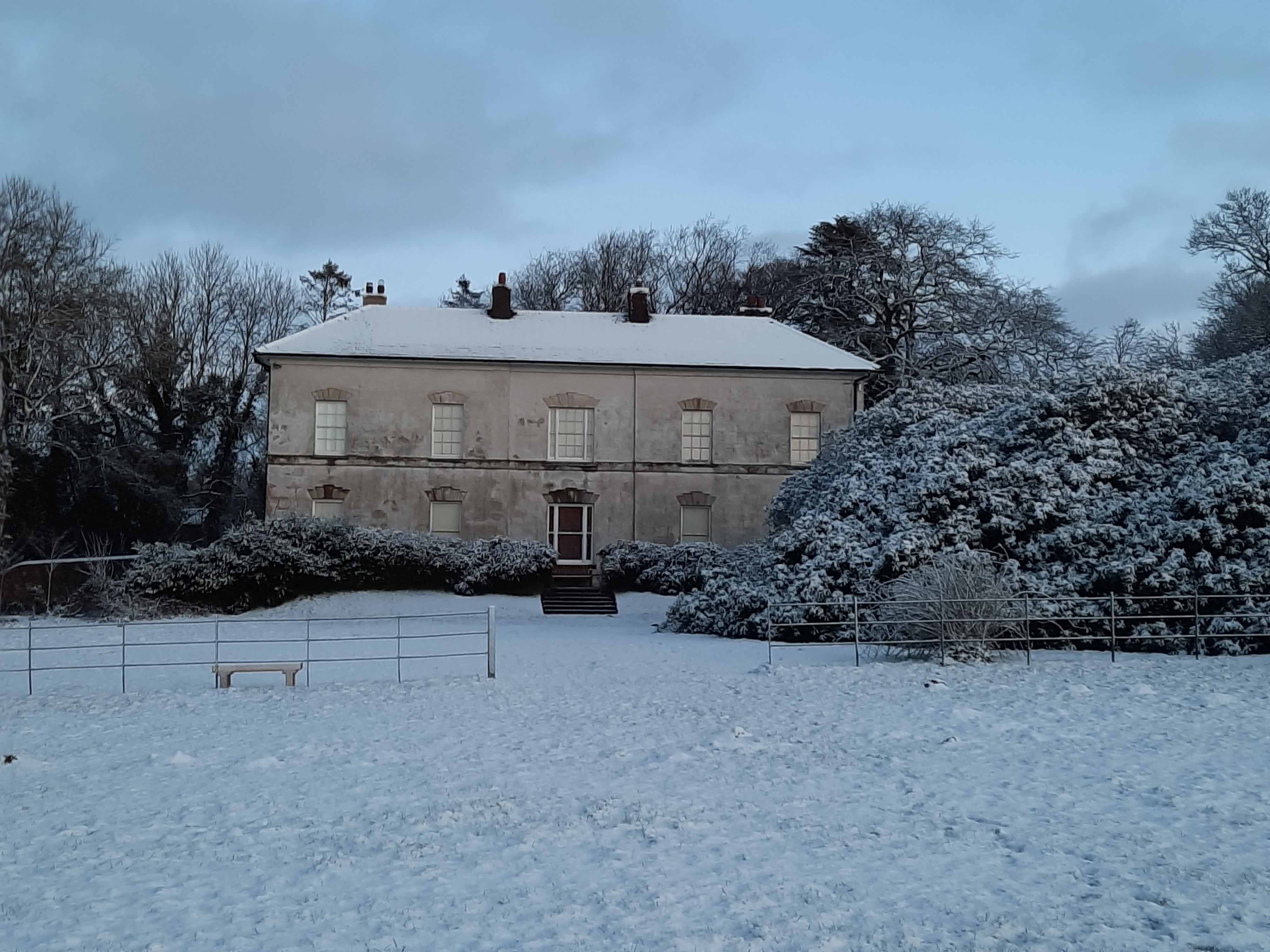From drawing room to servants’ hall, and from master bedroom to cellar, Scolton Manor presents a vivid panorama of nineteenth-century life in Wales.
The Scolton Manor that stands today is a Victorian construction completed in 1842, designed and built for James Higgon by renowned local architect-engineers William and James Owen. But the estate itself had been owned by Higgons since late in the Elizabethan era, and Scolton’s history is inseparably entwined with that of this prominent local family. Today the manor hosts Pembrokeshire’s County Museum and attracts tens of thousands of visitors each year, offering a rare glimpse of how country life was lived down the centuries – not by the extremely wealthy, nor the desperately poor, but by a prosperous working upper-middle-class family and those who served them.
In fact, the Scolton story goes back even beyond the Higgons. The Black Book of St Davids (1326) lists a manor and estate belonging to Sir Guy de Bryan at ‘Scaneton’, which in 1572 passed into the hands of Sir John Perrot (as rumour had it an illegitimate son of Henry VIII). Although relatively little is known about the original house, it likely sat on the site of the present-day Home Farm and was certainly imposing: tax records reveal that it had four hearths at a time when more than one was highly exceptional. In 1594 this old manor and the surrounding grounds at Scolton came into the possession of the Higgon family, presence in Carmarthenshire since at least the fourteenth century.

So the Scolton and Higgon stories are closely linked from the time of Shakespeare and Queen Elizabeth onwards. During the eighteenth and nineteenth centuries, the family was forced away for an uncertain number of decades after a catastrophic fire destroyed the old house. But by the 1830s James Higgon had put in motion plans to return to Scolton, and early in the next decade were completed the manor, stable block and walled garden that still stand today. From then on the family, house and estate were at the heart of the social and economic life of the area. Scolton’s need for staff made it the region’s chief employer and a local hub; successive generations of Higgons produced three Sheriffs of Pembrokeshire, as well as heroes of both World Wars; and the house itself served as a convalescent hospital for servicemen during the Second World War.


The estate as a whole now offers an exciting range of activities for the whole family, and is run with a focus on sustainability and stewardship of the local environment for the future. But the manor itself remains to offer a vivid glimpse of the past in which Scolton has already played such a positive role. Sympathetically restored by the Museums Service, and furnished with authentic period pieces on loan from the National Museum of Wales, Scolton Manor allows visitors to glimpse upper-middle-class Victorian country house life as it was lived both above and below stairs. The wealth of fascinating artefacts on display include a knife cleaner and 1880s washing machine, and among Scolton’s many notable paintings are William Frith’s The Tenby Fisherwoman (1880), numerous portraits, and a contemporaneous depiction of the Battle of Fishguard – known as the last invasion of Britain!




